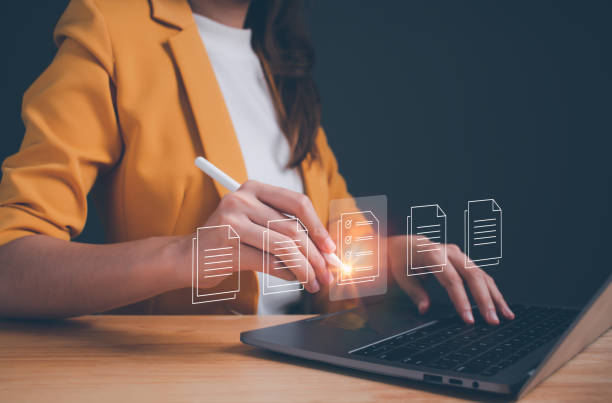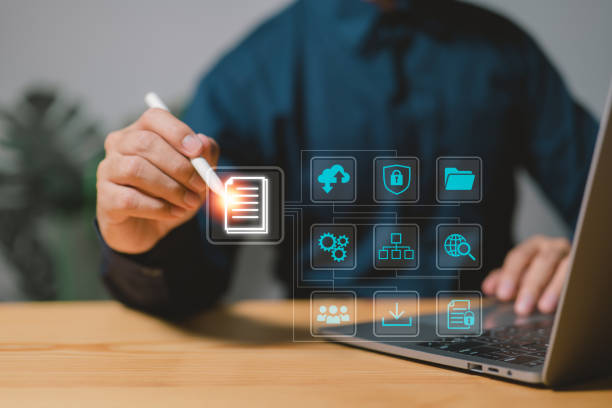An Introduction to On-Page SEO and Its Importance
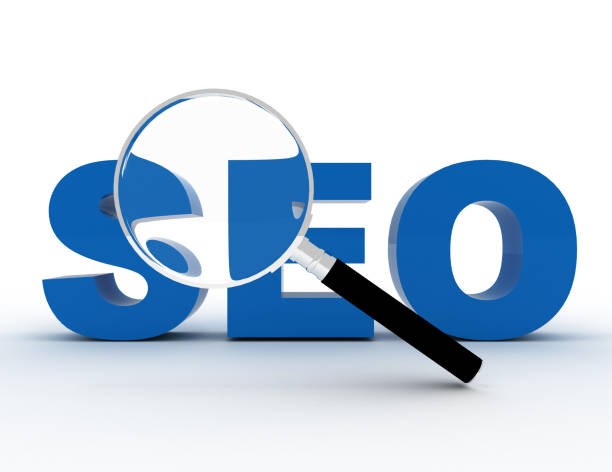
On-page SEO, or On-page SEO, is the cornerstone of any website’s success in search engines.
This process involves optimizing various elements within your website itself so that search engines can better understand your content and display it to relevant users.
The main goal of #on_page_seo is to improve the visibility and ranking of web pages in search results for #relevant_keywords.
Unlike off-page SEO, which focuses on backlinks and off-site signals, on-page SEO is entirely under your control and allows for continuous changes and improvements.
This section provides a comprehensive explanation of what on-page SEO is and why it’s important.
Through an educational approach, we will learn how to ensure that our content is understandable not only to users but also to search engine crawlers.
No matter how high-quality and valuable your content is, if search engines cannot properly index and understand it, it will not be seen.
Therefore, the importance of this part of website optimization should never be underestimated.
This is a continuous process and requires updates and adaptation as Google’s algorithms change.
Success in on-page SEO is the foundation of a powerful and sustainable SEO strategy that helps you attract more organic traffic and ultimately achieve your business goals.
Are your e-commerce site visitors leaving before making a purchase? Don’t worry anymore! With Rasaweb’s professional e-commerce website design services, solve the problem of visitor-to-customer conversion forever!
✅ Significant increase in conversion rates and sales
✅ Excellent and attractive user experience
⚡ Contact us now for a free consultation!
Keyword Research for On-Page SEO

Keyword research is the first and vital step in any on-page SEO strategy.
Without a precise understanding of the words users employ to find similar content, optimizing pages will be futile.
This section provides a specialized and guiding explanation of how to conduct effective keyword research.
The goal is to find not only keywords with high search volume but also keywords with appropriate Search Intent.
Tools such as Google Keyword Planner, Ahrefs, Semrush, and Moz Keyword Explorer can be helpful in this process.
For each page, one main keyword and several secondary keywords (LSI Keywords) should be chosen.
Main keywords should be placed in the title, meta description, headings, and the first paragraph of the page, while secondary keywords should be naturally distributed throughout the text to help search engines better understand the overall topic of the page.
Choosing the right keywords means finding a balance between search volume, competition, and relevance.
The more precise and targeted your keywords are, the higher your chances of attracting relevant traffic and increasing conversion rates will be.
This is a continuous process and requires updates to always keep pace with changes in user search behavior and search engine algorithms.
Content Optimization for Search Engines
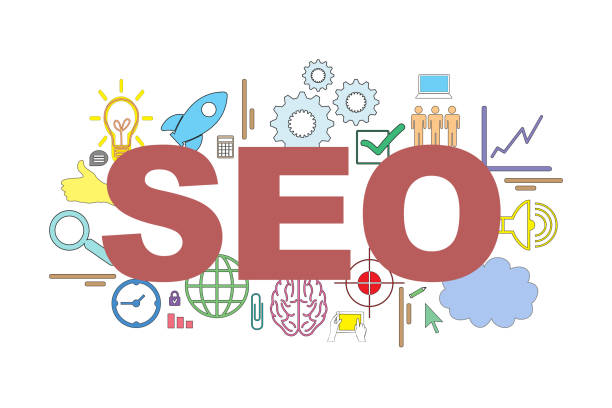
Content is the undisputed king in the world of SEO, and optimizing it for search engines is an integral part of a successful on-page SEO strategy.
This educational and analytical process shows you how to write content that is both engaging for users and understandable for search engine crawlers.
Among the most important aspects are content quality, its depth, and the correct use of keywords.
Your content should be comprehensive, accurate, and responsive to user needs.
Using appropriate headings (H1, H2, H3, etc.) helps structure the content and increases its readability.
Also, naturally incorporating primary and secondary keywords and avoiding excessive repetition (Keyword Stuffing) is very important.
Content readability is also a key factor; short sentences, small paragraphs, and the use of lists and images can improve the user experience.
Adhering to the E-A-T principle (Expertise, Authoritativeness, Trustworthiness), meaning demonstrating expertise, credibility, and trustworthiness in content, especially for sensitive topics, is of high importance.
Ultimately, your content must be unique and valuable to attract the attention of search engines and users.
Table 1: Key Factors in Content Optimization
| Factor | Description | Importance in SEO |
|---|---|---|
| Quality and Depth of Content | Providing comprehensive, accurate, and unique information that answers user questions. | High: The foundation of ranking and user attraction. |
| Keyword Usage | Natural inclusion of primary and secondary keywords in text, title, and headings. | High: Helps the search engine understand the page’s topic. |
| Readability and Structure | Use of headings, short paragraphs, lists, and images to improve user experience. | Medium to High: Improves user interaction and behavioral signals. |
| E-A-T Principle | Demonstrating expertise, credibility, and trustworthiness of content, especially for sensitive topics. | High: Critical factor for ranking in sensitive areas. |
The Role of Title Tags and Meta Descriptions in On-Page SEO
![]()
Title Tags and Meta Descriptions are two very important elements in on-page SEO optimization that directly impact the visibility of your page in search results.
An explanation of these elements: The title tag is the title displayed in the browser tab and, more importantly, the main clickable title in Google search results.
This tag should include the page’s main keyword and be approximately 50 to 60 characters long to be fully displayed.
A key guideline is that the title should be appealing and persuasive to encourage users to click.
The meta description is a short text that appears below the page title in search results and provides a summary of the page’s content.
Although the meta description is not directly a ranking factor, it plays a very important role in increasing the click-through rate (CTR).
The meta description should include relevant keywords and briefly and effectively entice the user to visit the page.
The ideal length for a meta description is approximately 150 to 160 characters.
Both of these elements are the user’s first point of contact with your content in the SERP (Search Engine Results Page), so their precise optimization is essential for increasing organic traffic and improving your overall on-page SEO performance.
Are you tired of your e-commerce site having visitors but no sales? Rasaweb solves your core problem by designing professional e-commerce websites!
✅ Significant increase in sales with targeted design
✅ Flawless user experience for your customers
⚡ Get a free consultation now!
Improving URL Structure and Internal Linking

URL structure and internal linking are two vital elements in an on-page SEO strategy that help search engines better understand the structure and connections of your website’s pages.
This section provides a specialized and comprehensive guide on best practices for optimizing these two factors.
URLs should be short, descriptive, contain main keywords, and be free of extra characters.
Using hyphens (-) to separate words instead of underscores (_) is recommended.
A logical and hierarchical URL structure not only helps users navigate the website but also assists search engines in crawling and indexing your site.
Internal linking means creating links from one page to another within the same website domain.
This has many benefits: it distributes SEO power (link juice) between pages, helps users find relevant content and improves user experience, and shows search engines which pages are more important.
Using descriptive and relevant anchor texts (Anchor Text) in internal links is very important.
For example, instead of “click here,” use a phrase like “comprehensive on-page SEO guide.”
A strong internal linking strategy significantly helps improve your site’s overall ranking in search results.
Optimizing Images and Multimedia Files

In today’s visual world, images and multimedia files play a vital role in attracting users and conveying messages.
But for on-page SEO, proper optimization of these elements is also essential.
This specialized and educational section teaches you how to optimize your images and videos to both improve page loading speed and help rank in image search results.
The first step is image compression without losing quality.
Using appropriate formats (like WebP for the web) and compression tools can significantly reduce file sizes.
The next step, using descriptive Alt Text for images, is important.
Alt Text is not only useful for visually impaired users but also helps search engines understand the image’s content.
Be sure to include relevant keywords in your Alt Text.
Naming image files with relevant keywords (e.g., “on-page-seo-guide.jpg” instead of “IMG_1234.jpg”) is also recommended.
For videos, using a Video Sitemap and Schema Markup can help Google better discover and understand your video content.
Multimedia optimization not only helps on-page SEO but also improves User Experience (UX), which is itself an important ranking factor.
Site Speed and User Experience (UX) as Critical On-Page SEO Factors
![]()
In today’s fast-paced internet world, site speed and user experience (UX) are no longer just competitive advantages, but have become critical factors in on-page SEO.
Google has repeatedly emphasized that page loading speed and providing an excellent user experience are among its top priorities for ranking websites.
This section provides an analytical and informative overview of the importance of these two factors in on-page SEO.
Slow pages not only cause users to leave quickly (high bounce rate), but also harm the user experience and send negative signals to search engines.
Core Web Vitals, a set of Google’s metrics for evaluating web page user experience, include LCP (Largest Contentful Paint), FID (First Input Delay), and CLS (Cumulative Layout Shift), which play an important role in ranking.
Optimizing images, reducing the number of HTTP requests, using caching, compressing code (CSS, JavaScript, HTML), and using a strong hosting provider are among the actions that can be taken to improve site speed.
A positive user experience includes easy navigation, responsive design (responsive design) for various devices, and high-quality, accessible content.
The longer users spend on your site and the fewer problems they encounter, the more positive signals are sent to search engines, which helps improve your on-page SEO ranking.
Table 2: Core Web Vitals Metrics and Their Importance
| Metric | Description | Good Goal |
|---|---|---|
| LCP (Largest Contentful Paint) | The time it takes for the largest content element on the page (image, video, text block) to load. | Less than 2.5 seconds |
| FID (First Input Delay) | The time delay between the user’s first interaction (click or tap) and the browser’s response. | Less than 100 milliseconds |
| CLS (Cumulative Layout Shift) | The extent of unexpected visual instability on the page (unexpected shifts in element layout). | Less than 0.1 |
Technical On-Page SEO and Schema Markup

Technical on-page SEO is a more complex part of on-page SEO that deals with optimizing the technical infrastructure of the website to assist search engine crawlers.
This aspect of SEO is essential to ensure the crawlability and indexability of your site.
This section provides a specialized and educational overview of factors such as robots.txt file, XML sitemap, Canonical Tags, Mobile-Friendliness, and the use of HTTPS.
Robots.txt tells search engines which parts of your site should not be crawled.
An XML sitemap provides a list of all important URLs on your site to search engines.
Canonical Tags help resolve duplicate content issues, while Mobile-Friendliness (responsive design) is vital for mobile search ranking.
Using HTTPS is also considered a ranking factor due to security and trust-building.
Furthermore, Schema Markup is a powerful tool for increasing visibility in search results.
Schema is code that adds meaning to your content and helps search engines understand information in a more structured way, which can lead to the display of Rich Snippets.
Proper implementation of these technical elements provides a strong foundation for your on-page SEO strategy.
How much does losing business leads due to an unprofessional website cost you? Solve this problem forever with professional corporate website design by Rasaweb!
✅ Increased credibility and trust of potential customers
✅ Easier attraction of new business leads
⚡ Get a free consultation now!
Monitoring and Analyzing On-Page SEO Performance
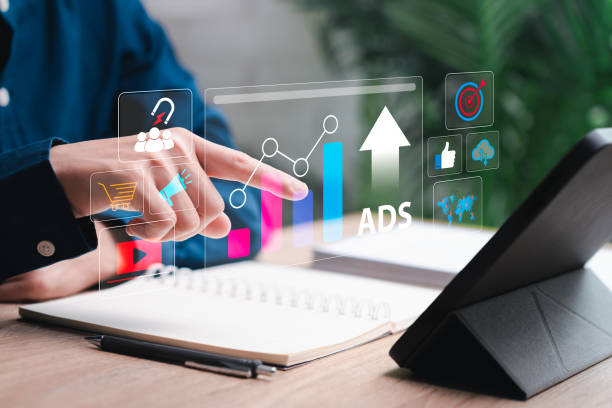
After implementing an on-page SEO strategy, the next step is monitoring and analyzing performance.
Without accurate tracking, you cannot be sure of the effectiveness of your efforts and identify strengths and weaknesses.
This section provides an analytical and practical guide to using important tools to check your website’s on-page SEO status.
Google Search Console is an essential tool that provides critical information about your site’s performance in Google Search, including the keywords you rank for, indexing issues, crawl errors, and Core Web Vitals.
Google Analytics also helps you understand user behavior on your site, such as the number of visitors, time spent on site, bounce rate, and user paths.
Additionally, paid SEO tools like Ahrefs, Semrush, and Moz provide deeper insights into keyword performance, backlink status, and competitor analysis.
Regular monitoring of these metrics allows you to detect algorithm changes, quickly resolve technical issues, and optimize your on-page SEO strategy.
By analyzing data, you can improve your content, strengthen internal linking, and ultimately achieve better rankings and sustainable organic traffic.
Common On-Page SEO Mistakes and How to Avoid Them
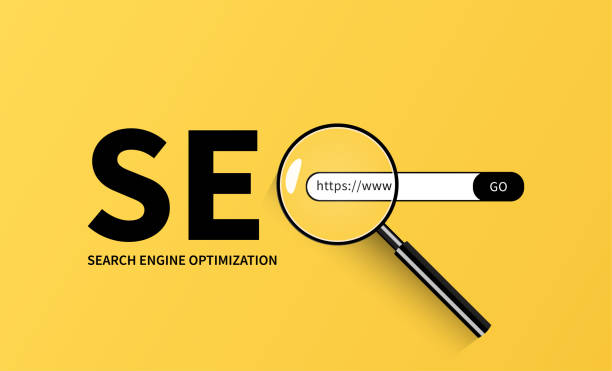
On the path to optimizing on-page SEO, many webmasters and marketers make mistakes that can render their efforts ineffective.
Recognizing these mistakes and knowing how to avoid them is crucial for success in SEO.
This section is a comprehensive guide that addresses the most common and questionable mistakes and provides solutions to prevent them.
One of the most common mistakes, Keyword Stuffing, or excessive repetition of keywords, is not only harmful to user experience but can also lead to penalties from Google.
Instead, use keywords naturally and within the appropriate context.
Another mistake is neglecting site speed and mobile user experience; while these two factors have become increasingly important for ranking.
Low-quality or duplicate content can also harm your ranking.
Always produce unique, valuable, and comprehensive content.
Failure to optimize title tags and meta descriptions, or not using Alt Text for images, are also common errors.
Furthermore, neglecting internal linking and failing to create a logical website structure can hinder the proper distribution of SEO power and the correct understanding of the site structure by search engines.
Finally, not regularly monitoring on-page SEO performance and ignoring changes in Google’s algorithms can lead to a loss of ranking.
By avoiding these mistakes, you can increase your chances of success in the competitive world of search.
Frequently Asked Questions
| Row | Question | Answer |
|---|---|---|
| 1 | What is On-Page SEO? | On-Page SEO refers to a set of actions performed within a website (on its pages) to improve its ranking in search engine results. This includes optimizing content, site structure, and HTML code. |
| 2 | Why is On-Page SEO important? | On-Page SEO helps search engines better understand page content and determine if the page is relevant and valuable for user searches. This better understanding leads to higher rankings. |
| 3 | What is the first and most important step in On-Page SEO? | Keyword Research is the most important initial step. By finding the right keywords, targeted content relevant to user needs can be produced. |
| 4 | What is the role of the Title Tag in On-Page SEO? | The title tag is one of the most important ranking factors and should include the main keyword. This tag is displayed as the page title in search results and affects the click-through rate (CTR). |
| 5 | What is the importance of Meta Description? | Meta description does not directly impact ranking, but by providing an attractive summary of the page’s content in search results, it can encourage users to click, thereby increasing the click-through rate (CTR). |
| 6 | Why is using headings (H1, H2, etc.) important in content? | Headings help structure content and improve readability for users and search engine crawlers. Using keywords in headings also helps the search engine better understand the topic. |
| 7 | What does Image Optimization in On-Page SEO include? | It includes compressing images to reduce size, using descriptive and relevant file names, and filling the Alt tag (alternative text) with relevant keywords to help search engines understand image content. |
| 8 | What is Internal Linking in On-Page SEO? | Internal linking refers to creating links between different pages of a website. This helps distribute page authority (Link Equity), improves user experience, and assists search engine crawlers in discovering new pages. |
| 9 | Why is Page Speed important for On-Page SEO? | Page speed is a direct ranking factor and significantly affects user experience. Slow pages can lead to increased Bounce Rate and reduced user engagement. |
| 10 | What role does quality content play in On-Page SEO? | Quality, comprehensive, unique, and valuable content for the user, is the core of On-Page SEO. This content not only attracts and retains users but also sends positive signals to search engines and helps achieve better rankings. |
And other services of Rasaweb advertising agency in the field of advertising
Smart Sales Automation: An effective tool for online growth with the help of attractive UI design.
Smart Brand Identity: A professional solution for digital branding focusing on attractive UI design.
Smart Website Development: A creative platform to improve sales growth with custom programming.
Smart UI/UX: A professional solution for digital branding focusing on optimizing key pages.
Smart SEO: A dedicated service for improving SEO ranking based on intelligent data analysis.
And over hundreds of other services in the field of internet advertising, advertising consultation, and organizational solutions
Internet Advertising | Advertising Strategy | Advertorials
Sources
- What is Internal SEO?
- Comprehensive Guide to On-Page SEO
- Internal SEO Techniques to Improve Ranking
- Internal Linking Principles for Better SEO
? Rasaweb Afarin, a leading digital marketing agency, paves the way for your business success. From professional e-commerce website design to comprehensive SEO strategies, we are ready to differentiate your brand in the online space and elevate it to the top.
📍 Tehran, Mirdamad Street, next to Bank Markazi, Kazerun Jonubi Alley, Ramin Alley, No. 6

